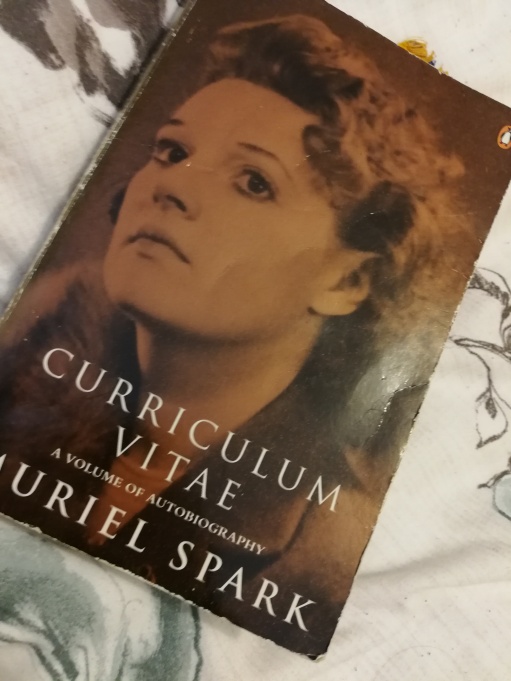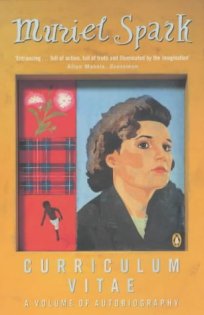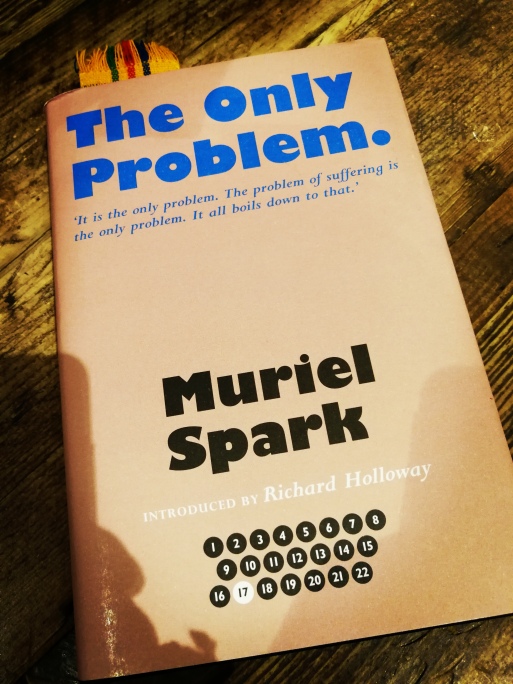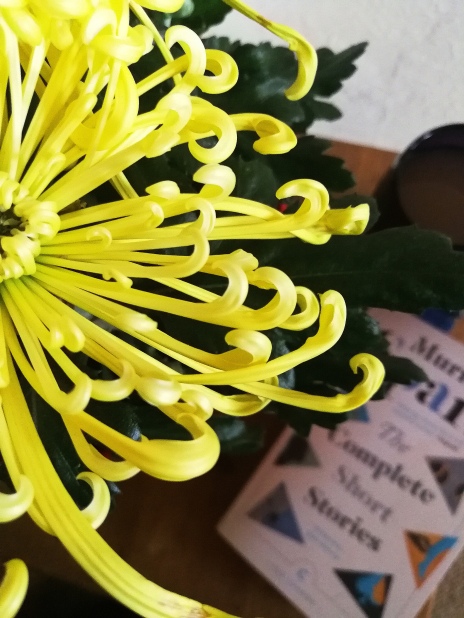
Following a wonderful year of #readingmuriel2018 this seemed the perfect book to end 2018 with.
Alan Taylor first met Muriel Spark in Arezzo in 1990, she was already seventy-two and had been living in Italy with her companion Penelope Jardine since the 1970s. Taylor had gone to Arezzo especially to interview Muriel Spark. From this first meeting there blossomed a mutual, fond friendship which only ended with Spark’s death.
In Appointment in Arezzo, Alan Taylor tells the story of Muriel Spark, using his knowledge of the writer, as well as his conversations and friendship with Muriel and Penny. Taylor and his family became regular visitors at San Giovanni; Muriel Spark’s home in Italy, he tells of the family’s first holiday there, when Muriel and Penny were away travelling, and the Taylor family were left in charge of the house and the dogs. There were other times the family stayed with Muriel and Penny and their household is a charmingly chaotic, colourful one, a place of real warmth I felt.
“As we got out of the car, Muriel, dressed in an elegant trouser suit, emerged from a gnarled door, beaming broadly and greeting the children as if she’d known them all their lives. She had in her hands two notebooks, one of which she presented to each of the children. Jennifer’s was called ‘Confidential’ while Michael’s was ‘Underground.’ ‘Hide them from the customs officials,’ Muriel whispered.”
Alan Taylor was to accompany Muriel on several trips abroad – arranging for her to speak at the Edinburgh book festival – an event that had the whole of Edinburgh fighting for tickets – well you can hardly blame them. We witness Muriel in Manhattan, and Taylor recalls the years that Muriel Spark wrote for the New Yorker – and had her own office in their building. When the New Yorker celebrated its seventy fifth birthday, it invited Muriel Spark to take part in a festival, and due to Penny’s fear of flying, it was Alan Taylor who accompanied her.
“Throughout our stay in New York Muriel seemed carefree as I imagined she had been when she first arrived there in 1961, fascinated by everything and everyone. It was easy to forget that she was in her ninth decade and in constant pain. I couldn’t help but compare her with the elderly cast of Memento Mori. ‘How primitive life becomes in old age,’ thinks one of them, ‘when one may be surrounded by familiar comforts and yet more vulnerable to the action of nature than any young explorer at the pole.’ Muriel’s approach to ageing – and the infirmity that was its inevitable accompaniment – seemed to be to ignore it wherever possible.”
It is clear that the families became close, and Alan Taylor gained a deep understanding of Muriel Spark’s work, her character and personality. It seems to have been an understanding born of great respect for her work and affection for her as a person. It is obvious however that this book is in no way supposed to be a complete biography – it is the story of the Muriel Spark who was Alan Taylor’s friend.
“No life can be wholly recaptured in words. Something is always missing or unnecessarily included, or over-emphasised, or mis-recalled or made more of, or less of, than it merits. Scott Fitzgerald said that there never could be a good biography of a good novelist, because if he is any good he is too many people; Muriel would certainly have agreed with him.”
Taylor returns to those years before he knew Muriel Spark – and recounts briefly the years Muriel Spark herself covered in Curriculum Vitae. Her upbringing in Scotland, her brief disastrous marriage and the beginnings of her writing career.
However, Taylor certainly doesn’t shy away from those more controversial aspects of her life. He confronts the very difficult relationship with her son; Robin, relating aspects of their correspondence – which certainly shows another side to the story. He also confronts Muriel Spark’s attitude to her Jewish roots – one of the biggest arguments she and her son Robin had. He acknowledges Spark’s prior suspicion of biographers – especially following her experience with Derek Stanford – who had so betrayed her and whose unofficial biography had so infuriated her.
Taylor gives us Spark’s thoughts and feelings on all the key moments in her life, and her long career in writing. Taylor’s portrait is hugely affectionate, a warm, honest portrayal of a woman he quite obviously felt very in tune with. It is a wonderful portrait, and a wonderful book. It provides a fabulous companion to Curriculum Vitae – and for me really completed the picture of a writer I have come to admire so much.











 Mary also read The Complete Stories, tweeting that they were “original, crackling sharp wit. Preferred the older stories. Some-very odd.” Jennifer had the Complete stories to keep her company too. Sian read The Go Away Bird and other stories – a lovely old orange penguin edition. For Sian, The Go Away Bird was the stand out story too, calling it beautiful and shocking. I know Chrys is planning to start the stories soon, she has a lot to look forward to I think.
Mary also read The Complete Stories, tweeting that they were “original, crackling sharp wit. Preferred the older stories. Some-very odd.” Jennifer had the Complete stories to keep her company too. Sian read The Go Away Bird and other stories – a lovely old orange penguin edition. For Sian, The Go Away Bird was the stand out story too, calling it beautiful and shocking. I know Chrys is planning to start the stories soon, she has a lot to look forward to I think.
 A shout out to Chrys – who has been reading along with us all year – who today sent me a lovely little volume, The Muriel Spark society lecture by Ali Smith in a sweet little volume. I intend to read it on the bus on the way to the theatre tonight, thank you Chrys very much.
A shout out to Chrys – who has been reading along with us all year – who today sent me a lovely little volume, The Muriel Spark society lecture by Ali Smith in a sweet little volume. I intend to read it on the bus on the way to the theatre tonight, thank you Chrys very much.

 These stories were a real joy, in some respects they feel different to Spark’s novels, and yet they nevertheless contain Spark’s tell-tale wit, superb story-telling and wonderful twists. I shall continue to dip in and out of this collection, and hopefully will drop in at least one more review – time etc permitting. With such a large collection, there is bound to be some variance in quality – but what I have read so far gives me very high hopes for the rest.
These stories were a real joy, in some respects they feel different to Spark’s novels, and yet they nevertheless contain Spark’s tell-tale wit, superb story-telling and wonderful twists. I shall continue to dip in and out of this collection, and hopefully will drop in at least one more review – time etc permitting. With such a large collection, there is bound to be some variance in quality – but what I have read so far gives me very high hopes for the rest.





